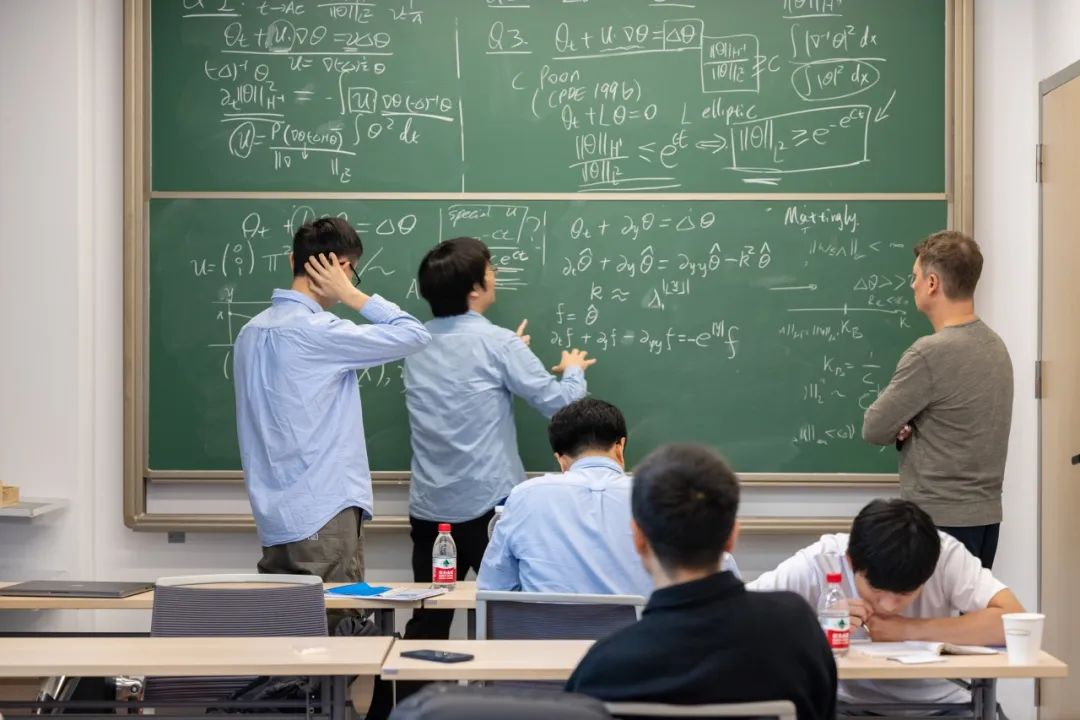"Nature is written in that great book which ever is before our eyes, but we cannot understand it if we do not first learn the language and grasp the symbols in which it is written. The book is written in mathematics."
-- Galileo
Alexey Cheskidov, formerly a full professor in the Department of Mathematics at the University of Illinois at Chicago and a member of the Institute for Advanced Study in Princeton, recently joined Westlake University full-time as a chair professor of mathematics in the Institute for Theoretical Sciences and established a mathematical fluid dynamics research group.
After 15 years of dealing with blackboard chalk in Chicago, this was the first time he left a familiar environment and decided to, "try something new." We sat down with him to ask why he wanted to try something new, and why do so at Westlake.

"I joined Westlake University because it's a new university with hard working teams which provides opportunities for scientists like me to focus on research," he told us, adding that it is also a great place to train new young mathematicians. He wants to be part of the effort to inspire the next generation of people to fall in love with the discipline, just like he did.
Cheskidov says that his fascination with mathematics started at early age when he began training for Math Olympiads that required solving nonstandard problems. Finding a solution to each of them was always a little discovery requiring designing some new trick, he said. There is a clear similarity with research projects tackling open problems, never solved before, where standard methods usually do not work. However, research projects in mathematics may last many months or even years, not just hours or days we spend on Olympiad problems.
As an undergraduate student Cheskidov also got interested in physics and continued traveling across the country for competitions in mathematics and theoretical mechanics, while doing research in group theory. "My fascination with Analysis and Mathematical Fluid Dynamics started in Bloomington, Indiana, where I met my future thesis advisor Ciprian Foias," he explains. "As a graduate student I was fortunate to be a part of the Foias-Temam school which was at the forefront of research on the Navier-Stokes equations, the most fundamental in mathematical fluid dynamics. I have been working on these equations ever since."
Cheskidov told us that the use of blackboards has a long-standing tradition in teaching and doing research in mathematics – a tradition dear to his own style. "The amount of blackboards at the ITS, Westlake, reminds me the Institute for Advanced Study, Princeton, where I spent the year of 2021-2022 participating at the special program on h-principle and its applications to problems in analysis and geometry," he says. "I remember numerous heated discussions around blackboards outdoor and various halls of the institute whose walls still remember Einstein and Von Neumann."
Cheskidov's work is focused on mathematical fluid dynamics. He explains that in the past couple of decades, this area has been highlighted by numerous constructions of solutions to fluid equations that exhibit pathological or wild behavior. These include the loss of the energy balance, non-uniqueness, singularity formation, and dissipation anomaly.
Interesting from the mathematical point of view, providing counterexamples to various well-posedness results in supercritical spaces, such constructions are becoming more and more relevant from the physical point of view as well. Indeed, a fundamental physical property of turbulent flows is the existence of the energy cascade. Conjectured by Kolmogorov, it has been observed both experimentally and numerically, but had been difficult to produce analytically. The purpose of his project on this work, he says, is to use state-of-the-art methods, such as convex integration and new developments in efficient mixing, to construct not only pathological mathematically, but also physically realistic solutions of fluid equations.
Cheskidov told us that he is most excited about putting together a team of students and teachers passionate about science. When asked what his goal for the newest established mathematical fluid dynamics research group is, he told us with a warm smile, "it's not something very complicated, it's building a talented team of people interested in the same thing, and work together, that all, it's very simple!"
